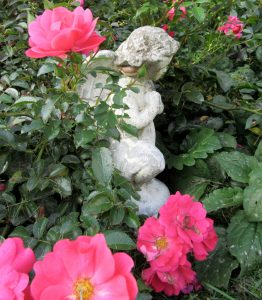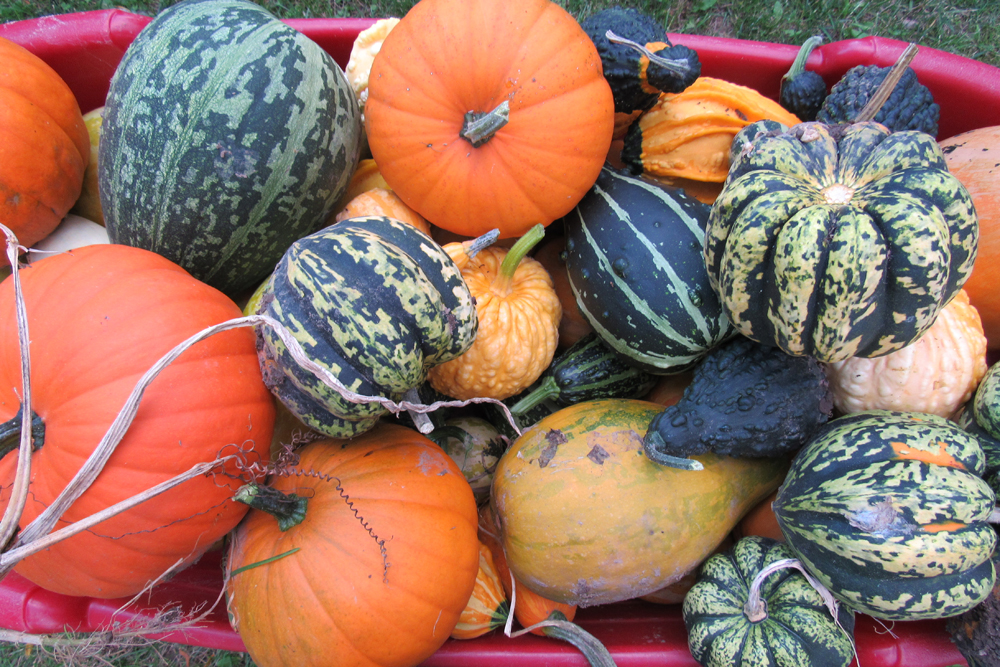Getting romantic in the garden
What a beautiful time autumn is in the garden! The annuals are putting on a tremendous show, the dahlias are stunning and it’s time to pick the pumpkins, gourds and winter squash.
No matter the season, your yard and garden is always a great place to be and if you are looking for more “drama” in your landscape, you might want to consider planning and planting a “romance” garden.

A “romantic space” is one that invites you to linger and one that stimulates the senses of touch, smell, sight and sound. Romance gardens often contain water pools, fountains, pathways, arbors, benches, statuary, trellises, bird baths or lighting. Trees, shrubs and plants also add to the romantic mood.
Consider trees as a backbone. Fruiting trees that bloom in the spring are desirable because of their magical flowers and scent.
Shrubs are also important to the garden backbone and can help you to create private spaces and reduce wind. Rose-of-Sharon (Hibiscus syriacus) blooms late in the season with red, white or purple hollyhock-like flowers. Flowering quince (Chaenomeles speciosa) blooms in the spring with red/red orange blooms. Spirea has pink flowers and pretty foliage that changes color in the fall. And hydrangeas, oh boy, don’t even get me started. Easy care, an amazing spectrum of blooms which change over the season and dried floral material for crafting and decorating.
For arbors or garden sheds, flowering vines add great drama and romance. Honeysuckle and clematis are two choices as well as wisteria. Also consider the fast-growing annual flowering vines like morning glories and scarlet runner beans. Sweet peas are another old-fashioned favorite for romantics.
One of the most important plants for a romance garden is roses. Choose from climbers, floribunda, hybrid tea, landscape and miniature varieties. Right now, my easy-care landscape roses and even my rugosas are putting on a remarkable show and adding lots of perennial color to my landscape after most flowering perennials are getting ready to sleep.
Don’t forget about fragrance. Sweet alyssum is a purple or white low-growing ground cover with blooms that have a honey-like fragrance. Dianthus has a spicy-sweet, clove scent. Irises, which bloom in the mid to late spring, have a remarkable sweet smell that is described as grape-like.
Early summer blooming peonies are a must with their voluptuous blooms.
The plants are long-lived and you don’t have to divide them very often, if at all.Lavender has fragrant purple flowers and attracts pollinators to your garden.
Bleeding heart (Lamprocapnos spectabilis) has leafy, fern-like foliage and white and rose pink blossoms that look like hearts and hang from arching stems. What could be more romantic than dangling little hearts nestled in your landscape?
Think about hanging baskets which can be placed on free-standing hooks or hung from tree limbs.
Another interesting facet of a romance garden is its after-dark side. Plant a moon garden within your romance garden with white flowering plants to reflect the moonlight. Choose an open spot where moonlight will not be obstructed. Plants that stand out in the moonlight include white lilies, roses, petunias, Shasta daisies, dusty miller, Russian sage and artemisia.
A romance garden can be a special place to enjoy a cup of tea and a good book, or to take an evening stroll with someone special.




